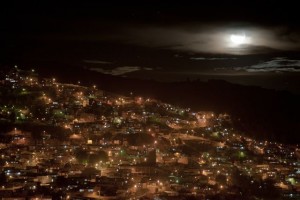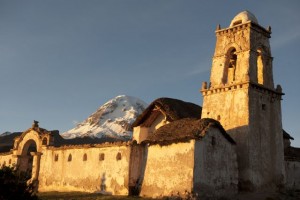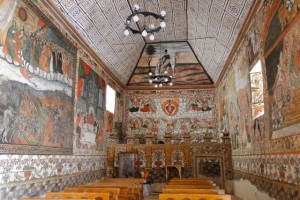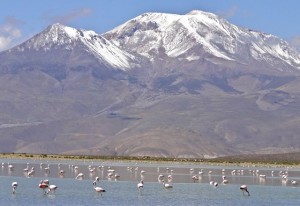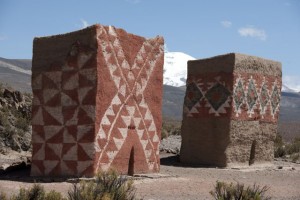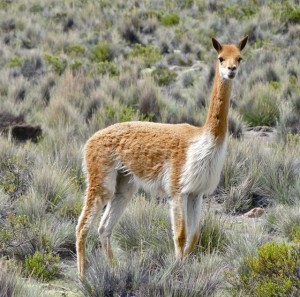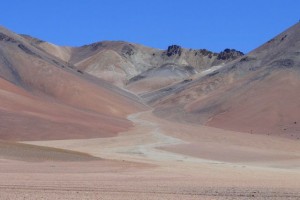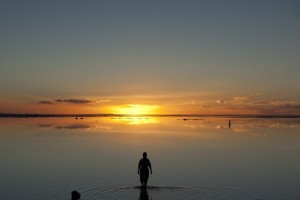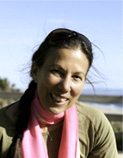Our trip has taken some interesting twists and turns and believe me, I’m not talking about roads here. We’ve been surprised that our experience is not, at a gut level, what we expected it to be. Actually, this notion of gut issues brings up an interesting memory.
Take, for instance, the first week of our trip, which seems of another era. Those first few days I was what you could call a toilet addict. This phenomenon was no different from any addiction. I needed frequent fixes and if I didnt know when or where I could next get to a toilet I got sweaty and nervous. I´ll leave the rest of the details to you. Then it occurred to me that for three years I’d been carrying the same packet of pale green pills in my first aid kit and never used them. Why not try one now? After that, my needs plummeted to zero, which is an equally alarming situation. Again, I´ll leave the details to you. After a few days of this, I wasn´t so desperate that I needed a curandero, but a serious talk with the village pharmacist seemed in order. She fixed me up with a miracle liquid. And ever since, there´s been no sign of the addiction returning. What a relief.
Now, back to where I left off last time, which had us barely pulling back from the brink of disaster and ready to leave La Paz, down but not out. Before leaving La Paz, I decided a pedicure was necessary. I’d already checked out our hotel’s purported spa, walking by and doing the sniff test. It smelled properly herbal so I had high hopes. These vanished as soon as I walked in, when I was greeted with news that my pedicurist would be late. To save time, the receptionist offered to get me started, and then cheerfully admitted she had no experience whatsoever doing pedicures.
She sat me in a padded lawn chair in what was obviously the facial room, brought in a low black plastic tray molded with foot-sized depressions, returned with a pitcher of hot water and suggested I put my feet in their respective slots to soak. She then poured the hot water over, handed me a year-old issue of Mining Magazine in Spanish, and left. By the time she returned to explain that the proper pedicurist still hadn’t shown, I had goosebumps from my feet having been immersed in the rapidly chilling water for 10 minutes. The receptionist squatted on the floor, took some cream which she promised was the second step, exfoliation, and started to apply that to my cold feet. Both of us realized at the same time that this was too awkward to be bearable, so she offered me a seat on the facial table instead and took over my lawn chair. After rubbing cream in for a few minutes, she left, returning soon to tell me the real pedicurist had decided not to come after all. Mortified, she then offered to complete the pedicure at no charge. I’m ashamed to admit that I found this offer attractive. Briefly. Then my sanity returned and I sternly told myself that I shouldn’t let someone who’d readily admitted knowing nothing about feet, touch mine. Even for free. Besides, I’d already finished Mining magazine and there was nothing else to read.
Despite our car troubles we drove out of La Paz in good spirits, though with a severely truncated Bolivia itinerary which took us straight south, rather than on the extended loop eastward which should have been our first foray in the country. This brought us close to the border with Chile. Volcano country. And I have to say that volcanos do add a certain “je ne sais quoi” to the landscape. There´s something about a snow-covered cone belching puffs of smoke that lifts my spirits. I don´t know whether this is a legacy of our Patagonia journey or whether being within spitting distance of Chile (the wind was in my favor) had anything to do with it, but when we fueled up at a handy border crossing gas station before heading into the wilds of southern Bolivia, our thoughts turned like flags in the breeze to that earthquake-torn country on my right. OK, to the west. With unexpected implications down the road.
Our first stop was a tiny village with an extraordinary white-washed church inside which were 400 year old frescos in pristine condition. The entire church interior was painted, which is why the locals have labeled it La Capela Sistina del Altiplano. Our quick lunch in the otherwise deserted pueblo consisted was called “thimpu.” In this case, thimpu was a heap of rice, half a boiled potato, a purple-grey tuber of unspecified origin, and a llama rib on which the nugget of meat was far outweighed by the strips of gristle cling to the bone. Yum!!!!
As we continued southward, we drove through increasingly bleak and barren areas. Roads so little traveled we´d come upon vicunas chewing their cud in the middle of the track. Villages so tiny and poor there wasn´t even any commerce between them. No longer did we see the odd colectivo crammed with passengers going from one pueblo to the next. These villagers were barely scraping by and seemed to have nothing to trade or sell, thus no need to visit each otherl. We were lucky once in a while to find someone who could sketch out for us which in the tangle of tracks was the road that would lead our way. Even so we took wrong turns. Most people could only give a general wave of the arm or point to a distant mountain to indicate our direction. It was frustrating and worrisome ….for one of us.
On one particular day, after driving a sandy track alongside a flamingo-filled lagoon, we came to some chullpas, blocky structures of red, grey, white and green clay bricks, thought to be mausoleums of Inca-era families. No grave-robbers had yet defiled these and they were a striking sight at the base of the surrounding low brown hills. From there we got a bit off-track and wound up wending our way past isolated homesteads that appeared to be slowly choking in the blowing sand that formed dunes between them and the hills. We spied some movement inside the stone wall protecting one such hut and stopped to check if we were going in the proper direction. An old woman –but how old is old here?– shuffled across her yard accompanied by a scraggly dog. Her yard was sand and nothing was growing anywhere around. I noticed a few twisted sticks of wood, undoubtedly carried from far away, as there were no trees anywhere within my field of vision. I have no idea how this woman could still be alive. I imagine that years ago the land was arable. But now the area has become a sea of sand, a slowly shifting, suffocating desert.
The woman and I exchanged a few words. I said the name of the village we wanted to reach, she said a different village name, then we both repeated what we´d said a few times. Having reached an impasse, we gave each other apologetic smiles and I got back in the car.
From there the track devolved to slippery grey clay which we slid through for a while until reaching a more proper, but still modest, dirt track once again. On leaving the area we passed through a pueblo that was devoid of all signs of normal mid-day life: no clusters of people eating lunch, no mothers sitting on a sparsely shaded stoop with their young ones, not even a stray dog. Only the occasional empty Coke bottle rattling down the dirt street gave sign that people did leave there. The gate post manned by the local army troop reminded us we were still at the base of a border area. There we came upon half the torpid troop dozing or picking their nails in the hot sun. Their commander came out, saluted us, asked where we were from, where we were going, gave us–finally–some good directions, and lifted the bar for us to go on our way.
Our planned stop for the night turned out to be unavailable…the owner’d left “for awhile.” A neighboring hostal offered us a room above their meat drying station, where thousands of flies were employed to tenderize thin strips of llama meat by doing a buzzing tap dance on the bloody surface. We chose to drive another few hours to reach Oruro, a nice small city, instead. This unplanned stop in Oruro gave the famous Bennett/Gateau luck a chance to appear once again. To put our long and depressing day’s drive behind us, we wandered to the main Plaza, which is the place to be if anything at all is happening in a village or city. On this balmy evening, we saw marching bands assembling, trumpeters making sure their cornets still squawked, drummers testing that the bang of their drums was sufficiently startling. Dancers in extravagantly embroidered red velvet outfits milled about. Turns out El Diablado, a very famous Oruro Carnaval dance, was happening that nigh. Thing is, El Diablado is supposed to be done the Monday before Mardi Gras. Not only were we several weeks late in that regard, but it was a Sunday night, not your usual evening for Satanic revelry. It wasn’t up to me to shake a calendar in anyone’s face, so we kept to ourselves and thrilled to the sight of 80-100 devils in garish masks decorated with serpents and popping eyeballs, as they whirled and cavorted through Oruro’s streets.
That was the last of the good times in Bolivia.
A couple days later, we spent a morning inside one of Potosi’s silver mines. This is a common tourist activity, so we weren’t doing anything off the beaten track. We did go in with our own guide though, who happily munched handfuls of the coca leaves we’d been told to buy as a gift for the working miners we’d encounter. We trudged through ankle-deep muddy water in the lightless tunnel, following a narrow-gauge rail over which miners push, three miners to a one-ton cart.
All told, we trudged 1/3 mile into the mountain. As we got deeper in, the cool air turned dusty, warm and acrid, nearly making me gag. And our guide became more manic, fueled by the great wad of coca in his cheek. Our headlamps illuminated the rock walls, with the occasional thick cable piping in compressed air for the drills, along with cracked and jagged brace beams low enough they forced us to squat to get under them. A normal miner typically starts working at 12 years old and dies of silicosis in his mid-forties. During that time, if he produces silver ore for processing he’ll earn $130 a month. He’ll eat breakfast, chew coca leaves for 8-10 hours, have tea, and go to bed. Some miners do two shifts a day to earn more money for their families. One hour was all I could bear underground, after which I collapsed on the bed in our hotel room, nauseous and drained, for 4 hours.
In the several days following this experience, we drove through ever bleaker country, an area of harsh semi-desert at altiplano altitudes. I’m told even Google Earth couldn’t put a name to where we were. And the four maps we’d scrounged of the area nearly tore themselves to shreds, so violently did they disagree on everything from where things were to how many kilometers separated one place from another. No one can live in this area, because it’s so arid that nothing can be grown. There are a few hostels whose caretakers are able to subsist by having food brought in to them by their far-away managers. Apart from that, there’s nothing but the tough tufted grass that vicunas will eat, mineralized lakes with krill that attract flamingos, mountains the colors of ground spices, and a lot of wind.
Finally, on our last two days in Bolivia, we encountered roads so horribly washboarded that the jarring, bone-shattering drive shook whatever remained of my modest resolve to grin and bear it. These were worse than any we encountered in the Gobi desert. “To hell with it,” I thought. “I need a few creature comforts,” and my last remaining bit of Snickers bar isn’t going to suffice.
That Bernard came down with a bad case of flu in the midst of this barren scene, didn’t help things. One moment he was fine, the next he had a fever and chills and all sorts of stomach issues. There we were at Bolivia’s southern most point, which is also part of its border with Chile. In our enfeebled state we could figure out two options. Continue eastward into the Bolivian mountains as originally planned and camp for a couple of nights, or exit Bolivia and head to a hotel we’d heard of in the Atacama desert. Given Bernard’s condition, and my desperate need to feel taken care of, we headed to the hotel.
The border crossing was simple and I fairly cackled with glee, bouncing up and down in my seat, when we reached fine Chilean pavement 6km after leaving Bolivia.
So, now we’re in Chile, most unexpectedly, but also most happily. Today we did not drive. Instead we took some good horses into a red desert canyon for the morning; late afternoon we watched the sunset after an hour and a half walk through chocolate brown dunes. After weeks that in retrospect took a greater toll on our energy and spirits than we’d realized, it’s good to feel coddled and well-looked after. We’ve decided to ship our car home from Buenos Aires, rather than return north to Lima. That means we’ll spend that the remainder of our trip in Argentina. Somewhere…..
-Dina









